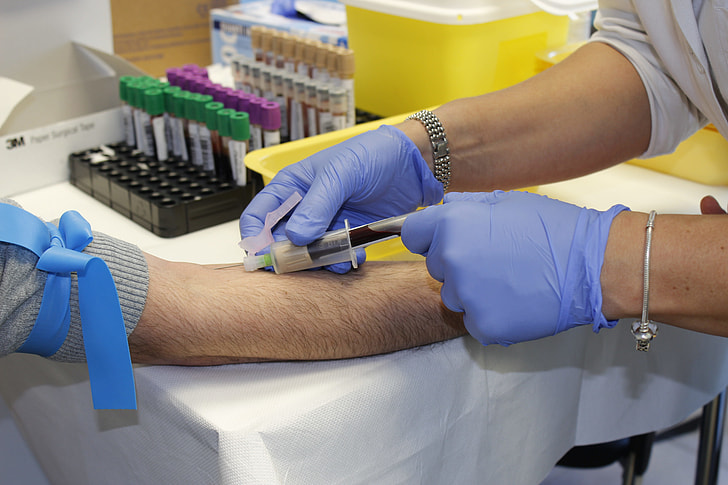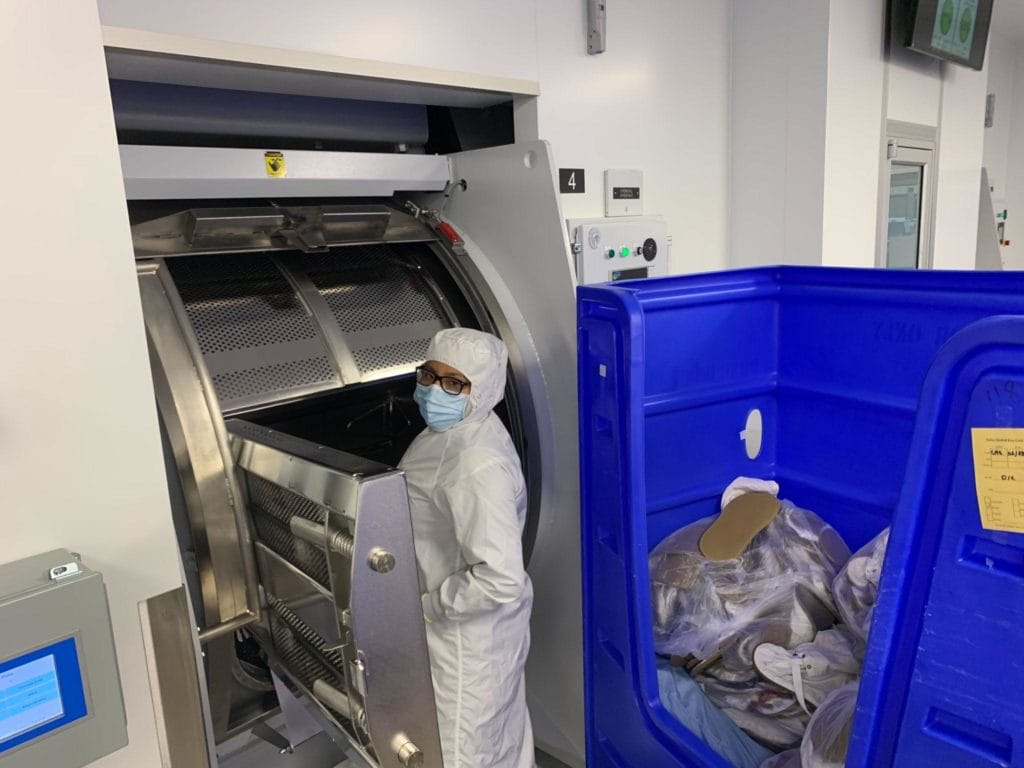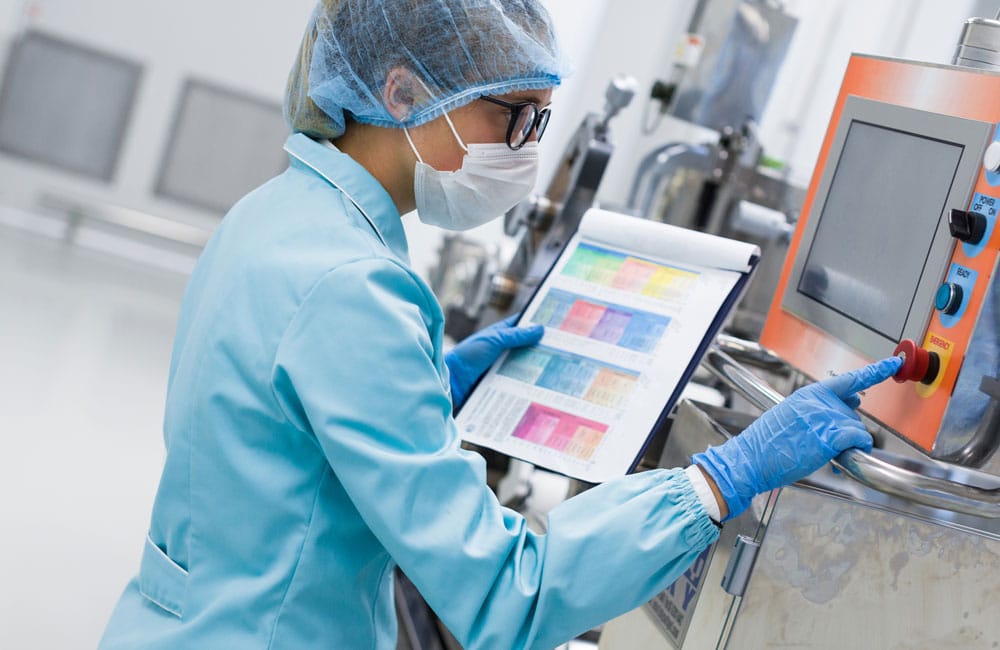
Modern food processing and pharmaceutical manufacturing environments are defined by high sterility requirements, constant human contact, and continuous microbial threats. Workers interact with sensitive products while surrounded by surfaces and tools where bacteria can multiply, migrate, and compromise entire production lines.
While surface disinfectants have improved significantly, they only address contamination after it appears. Preventive protection is where antimicrobial PPE and textiles step in. Over the last two decades, antimicrobial technologies in protective fabrics have evolved from basic silver ion treatments to next-generation copper-infused fibers, bio-based coatings, and embedded antimicrobial polymers.
This guide provides a complete comparison of leading antimicrobial technologies, evaluating:
- How they work
- What microbes they neutralize
- Regulatory compliance
- Durability, wash resistance, and lifespan
- Total cost of ownership
- Suitability for various industries
- Real-world ROI
- Case studies in food, dairy, pharma, and healthcare
Silver ion, copper ion, and antimicrobial polymer treatments are the three dominant technologies used in protective PPE fabrics. Silver provides broad-spectrum antimicrobial performance and excellent durability, while copper offers faster kill rates and lower likelihood of microbial resistance. Polymer-based antimicrobials provide stable, wash-resistant protection but vary widely in food-contact compliance. Choosing the correct technology requires balancing antimicrobial efficacy, regulatory acceptance, durability, worker comfort, and total cost of ownership.
1. Why Modern PPE Requires Antimicrobial Protection
1.1 High-Risk Environments
In food and pharmaceutical manufacturing, surfaces and textiles can easily become vectors for:
- Staphylococcus aureus
- E. coli
- Pseudomonas
- Listeria
- Salmonella
- Mold spores
- Yeasts
- Viral contamination
These microorganisms thrive due to:
- Warm indoor temperatures
- High moisture
- Organic residues
- Constant touch transfer
- Long production cycles
- Shared PPE and tools
1.2 PPE as a Microbial “Bus Station”
Traditional PPE such as gloves, aprons, sleeves, smocks, and face coverings:
- Constantly contact skin
- Absorb sweat and oils
- Touch machinery and product surfaces
- Are worn for 8–12 hours per shift
Once microbes attach, they:
- Multiply into large colonies
- Transfer to products or surfaces
- Increase cross-contamination events
- Trigger audit failures or recalls
- Cause occupational illness among staff
1.3 Antimicrobial Fabrics Solve a Key Weakness
Antimicrobial PPE:
- Neutralizes microbes before they multiply
- Reduces microbial load between wash cycles
- Slows “biofilm creep” across production lines
- Enhances food safety compliance
- Maintains sterility performance for longer shifts
In high-volume production environments:
Every hour of microbial suppression equals fewer swab failures, fewer recalls, and lower contamination risk per worker.
2. Major Antimicrobial Technology Categories
2.1 Silver-Ion Based Systems
Silver has been used for more than 6000 years for sterilization. Modern PPE integrates:
- Silver ions embedded in fibers
- Silver coatings bonded to polymer surfaces
- Silver nanoparticles infused into microfibers
- Silver release agents encapsulated into resin systems
2.2 Copper and Copper-Ion Technologies
Copper is one of the most effective antimicrobial metals in existence, killing microbes significantly faster than most silver systems. Common applications include:
- Copper-coated synthetic filaments
- Copper-infused yarns
- Copper nanoparticles
- Conductive copper surfaces in high-touch zones
2.3 Antimicrobial Polymer Systems
These solutions do not rely on metal ions. Instead, they use:
- Quaternary ammonium compounds
- Triclosan derivatives (restricted in many markets)
- Zinc pyrithione
- Silane-based coatings
- Non-leaching cationic polymers
- Bio-based antimicrobial films
2.4 Hybrid Systems
Many modern PPE products combine:
- Silver + copper
- Silver + polymer
- Copper + polymer
- Metal salts + nanoparticles
- Multi-stage antimicrobial matrices
They attempt to balance speed, durability, regulatory acceptance, and cost.
3. How Each Technology Works: Mechanisms of Action
3.1 Silver Ions
Silver kills microbes through multiple simultaneous pathways:
- Binding to bacterial DNA
- Disrupting protein synthesis
- Piercing cell membranes
- Interfering with ATP production
- Catalyzing oxidative damage inside the cytoplasm
Because its mechanisms are multi-pronged:
Microbial resistance development is extremely unlikely.
3.2 Copper Mechanisms
Copper is even more aggressive:
- Catalyzes high-rate oxidative destruction
- Creates membrane rupture within seconds
- Rapidly destabilizes structural proteins
- Breaks down DNA strands
- Generates copper-induced radical reactions
Studies show:
- 99.99% kill rate on many bacteria within 5–20 minutes
- Fastest antimicrobial textile performance among metal systems
3.3 Polymer Systems
Antimicrobial polymers can work in three ways:
-
Leaching systems
Release small amounts of active biocide to inhibit microbes. -
Non-leaching contact systems
Kill microbes by rupturing cell walls on contact. -
Dual systems
Combine both behaviors.
Polymer systems are highly tailored, but their kill speed and reliability vary dramatically based on chemistry and wash cycles.
4. Standards and Regulatory Compliance
| Technology | Typical Standards/Certifications | Key Compliance Areas |
|---|---|---|
| Silver-based PPE | ISO 22196, ISO 20743, EPA/FDA approvals | Food contact, antimicrobial activity |
| Copper systems | US EPA copper approvals, ISO 22196 | Surface sanitization and PPE compliance |
| Polymer antimicrobials | EPA FIFRA, BPR (EU), ISO 22196 | Chemical migration, safety, food grade |
| Hybrid systems | Must meet multiple standards simultaneously | Combined metal & chemical compliance |
4.1 ISO 22196 and ISO 20743
These standards measure quantitative antibacterial activity on surfaces or textiles, defining:
- Reduction rate
- Time required
- Repeatability
- Environmental test conditions
4.2 EPA and EU Regulations
Food and pharma environments require:
- Low chemical migration
- Non-toxic residues
- Clear traceability
- No surface shedding
- Registration of active ingredients
4.3 The Regulatory Advantage of Metals
Silver and copper have significant compliance advantages:
- Long historical safety record
- Strong audit transparency
- High international acceptance
5. Comparing Kill Speed and Efficacy
| Threat Type | Silver Ions | Copper Systems | Polymer Systems |
|---|---|---|---|
| Gram-positive bacteria | Very strong | Very strong | Varies by polymer chemistry |
| Gram-negative bacteria | Very strong | Extremely fast and aggressive | Moderate to strong |
| Mold and fungi | Strong | Strong | Moderate to strong |
| Virus inhibition | Documented | Strong documented | Highly variable |
| Biofilm suppression | Moderate | Very strong | Variable |
Key takeaway:
- Copper is fastest
- Silver is broadest
- Polymer systems require tailoring and testing
6. Durability and Wash Resistance
6.1 Silver Ion Durability
If embedded in fibers:
- Can last 50–200 wash cycles
- No performance drop
- Very stable across industrial laundering
If applied as surface coatings:
- Moderate resistance
- Gradual degradation after 20–50 washes
6.2 Copper Durability
Copper works best when:
- Integrated into the fiber substrate
- Bonded through plasma coating
- Encapsulated in the polymer resin
When well-engineered:
- Maintains performance for the life of the garment
6.3 Polymer Durability
Leaching systems degrade as chemicals release:
- Performance may drop sharply after 10–30 washes
Non-leaching systems last longer:
- Often 50+ wash cycles
- But sterilization chemicals may reduce performance
7. Comfort, Breathability, and Wearability
Silver and Comfort
- Virtually undetectable in fabric
- No change in hand feel
- Does not affect moisture management
Copper and Comfort
- Early copper-woven fabrics were heavy; modern variants are lightweight
- Can increase thermal conductivity, helping heat dissipation
Polymers and Comfort
- Often depend on coating type:
- Thin coatings = negligible impact
- Thick polymer coatings = reduced breathability
8. Cost Comparison
| Cost Driver | Silver Systems | Copper Systems | Polymer Systems |
|---|---|---|---|
| Raw material pricing | High | Medium | Low to medium |
| Application method cost | Medium–high | Medium | Low–medium |
| Lifespan | Very long | Very long | Variable |
| Replacement frequency | Lowest | Lowest | Highest |
Total Cost of Ownership Rankings
Best → Worst:
- Silver and copper tied (depending on supplier and wash durability)
- High-end non-leaching polymer coatings
- Budget polymer or triclosan systems
Cheap polymer systems:
Often result in much higher annual replacement cost even if initial pricing is minimal.
9. Case Study Deep Dives
Case Study 1: US Bakery Chain
Issue:
Workers’ smocks retained yeast contamination between cleaning cycles, causing cross-fermentation contamination in packaging rooms.
Solution:
Silver-infused polyester PPE smocks with ISO-rated antimicrobial treatment.
Outcome:
| Metric | Before | After |
|---|---|---|
| Contaminated swab surfaces | 16/45 | 2/45 |
| Smock replacement cycle | 90 days | 210 days |
| Audit non-conformance notes | 7 per quarter | 1 per quarter |
ROI achieved in 4 months.
Case Study 2: Dairy Processing Plant (Canada)
Problem:
Heat and moisture accelerated microbial colony growth on apron surfaces.
Solution:
Copper-integrated PVC-coated aprons.
Results:
| Index | Improvement |
|---|---|
| Surface microbial load after 8 hours | 98.5% lower |
| Apron wash frequency | Reduced by 35% |
| Line shutdowns due to swab failures | Eliminated |
Plant-wide savings exceeded $90,000 annually.
Case Study 3: Pharmaceutical Capsule Filling Facility
Challenge:
Workers complained polymer-based antimicrobial jackets developed odor after multiple shifts, indicating microbial retention.
Change:
Transition to silver-ion embedded nylon jackets.
Measured results:
- Odor complaints dropped 92%
- Lab swabs showed >99% bacterial reduction
- Garment lifecycle rose from 6 months to 20 months
10. Common Procurement Mistakes
| Mistake | Consequence | Prevention |
|---|---|---|
| Choosing the cheapest antimicrobial agent | Poor durability and failed audits | Evaluate total cost of ownership |
| Not testing wash resistance | Protection disappears after 10–30 washes | Require independent wash-cycle performance reports |
| Confusing “antimicrobial treated” with “food compliant” | Audit failure | Verify FDA/EPA/BPR approvals |
| Ignoring fabric breathability | Workers reject PPE | Select metal-ion systems that do not stiffen the fabric |
| Assuming all silver/copper systems are equal | Performance varies drastically by application method | Request microbicidal test data |
11. ROI of High-Grade Antimicrobial PPE
11.1 Financial Model Example
| Scenario | Cheap Polymer PPE | Premium Copper PPE |
|---|---|---|
| Annual PPE cost | $12,000 | $22,000 |
| Contamination shutdown losses | $70,000 | $0 |
| Product scrap | $28,000 | $2,500 |
| Microbial-positive swab events | 18 per year | <1 per year |
Net savings:
$83,500 annually despite higher purchase cost.
11.2 Factors That Improve ROI
- Lower replacement frequency
- Fewer line shutdowns
- Reduced microbial swab failures
- Extended service life
- More satisfied and compliant workforce
12. Which Technology Fits Which Industry?
| Sector | Best Fit | Why |
|---|---|---|
| Dairy processing | Copper + silver blends | Fast kill speed + biofilm suppression |
| Bakeries | Silver | High durability + low discoloration |
| Meat processing | Copper | Handles aggressive microbial load |
| Pharmaceutical packaging | Silver | Meets strict audit transparency |
| Hospitals | Silver/polymer blend | Multi-pathogen environment |
| Consumer clothing | Polymer systems | Cost point sensitivity |
13. Buyer Checklist for Antimicrobial PPE Procurement
- [ ] Request ISO 22196 or ISO 20743 antimicrobial reduction data
- [ ] Ask for wash-cycle durability reports
- [ ] Confirm EPA/FDA/BPR registered active ingredients
- [ ] Benchmark kill times (2h, 4h, 8h, 24h)
- [ ] Verify fabric migration and shedding
- [ ] Ensure no volatile residue release
- [ ] Match technology to risk level:
- Food manufacturing: Silver or copper
- Pharmaceutical cleanrooms: Silver
- Cost-sensitive applications: Non-leaching polymer systems
- [ ] Conduct 30-day field trials prior to contract
- [ ] Interview workers for comfort feedback
- [ ] Audit suppliers for traceability and long-term availability
14. Frequently Asked Questions (FAQ)
Q1: Is silver or copper better?
A:
- Copper kills faster
- Silver has broader regulatory acceptance
- Hybrid systems combine strengths of both
Q2: Are polymer antimicrobials effective?
A:
Yes, but their durability, kill speed, and compliance vary widely. They must be tested rigorously.
Q3: Do these technologies replace surface sanitizing?
A:
No. They are preventive layers, not disinfectant replacements.
Q4: Can antimicrobial PPE stop viral spread?
A:
Metal-ion systems have documented antiviral activity, but viral suppression must be validated per product.
Q5: Will antimicrobial coatings irritate skin?
A:
Embedded metal-fiber systems rarely cause irritation, but leaching chemical systems must be patch-tested.
15. Advanced Sourcing Strategy
-
Define contamination vectors Map PPE contact points across production zones.
-
Select by kill mechanism
- Copper for rapid microbial destruction
- Silver for wide-spectrum industrial certification
- Polymer systems for low-cost civilian markets
-
Demand quantitative reduction data Ask for controlled studies under real environmental conditions.
-
Implement laundering traceability Antimicrobial performance should be logged across wash cycles.
-
Use color coding to avoid cross-zone migration
- Red = raw material
- Blue = processing
- Green = packaging
- Yellow = allergen zones
-
Integrate worker feedback loops PPE that is uncomfortable will be misused.
16. Conclusion
Antimicrobial PPE is no longer a luxury—it is a frontline requirement in modern high-risk manufacturing where:
- Zero contamination tolerance
- International audit standards
- Continuous product exposure
are the new normal.
Among available solutions:
- Silver ion systems are the regulatory favorite, highly durable, and broadly effective
- Copper systems deliver the fastest microbial kill rates and superior resistance to biofilms
- Modern polymer systems can work extremely well but require proper engineering and validation
By evaluating:
- Kill speed
- Regulatory compliance
- Washing durability
- True lifetime cost
- Worker comfort
…procurement managers can prevent:
- Recalls
- Swab failures
- Production shutdowns
- Occupational infections
In a world where microbial threats evolve daily, the right antimicrobial textile isn’t just protection—it is insurance for the brand, product integrity, and regulatory compliance.
📩 Need help sourcing FDA/EU/ISO-compliant antimicrobial PPE with silver, copper, or hybrid systems?
Email: [email protected]
🌐 www.workwearsolutions.net
Zion Zhang
Recent Posts
 Antimicrobial Fabrics: The Hidden Hero in Food & Pharma PPE2025年11月20日Food and pharmaceutical production environments demand the […]
Antimicrobial Fabrics: The Hidden Hero in Food & Pharma PPE2025年11月20日Food and pharmaceutical production environments demand the […] Case Study: How a Mining Firm Switched to 100% Recycled Fabrics2025年11月20日A major mining company successfully transitioned from […]
Case Study: How a Mining Firm Switched to 100% Recycled Fabrics2025年11月20日A major mining company successfully transitioned from […] Europe’s Circular Workwear Trend: What Emerging Markets Can Learn2025年11月19日The European workwear industry is increasingly embracing […]
Europe’s Circular Workwear Trend: What Emerging Markets Can Learn2025年11月19日The European workwear industry is increasingly embracing […] Why ESG Standards are Becoming a Must for Global PPE Projects2025年11月19日Global PPE projects are increasingly under scrutiny for […]
Why ESG Standards are Becoming a Must for Global PPE Projects2025年11月19日Global PPE projects are increasingly under scrutiny for […] Circular Workwear Programs: How Rental & Recycling Models Cut Waste2025年11月19日Circular workwear programs are transforming the traditional […]
Circular Workwear Programs: How Rental & Recycling Models Cut Waste2025年11月19日Circular workwear programs are transforming the traditional […] Recycled Polyester & rPET Workwear: Green Solutions for 20252025年11月19日The global transition toward circular manufacturing and […]
Recycled Polyester & rPET Workwear: Green Solutions for 20252025年11月19日The global transition toward circular manufacturing and […]
CONTACT US
- Feel free to contact us any time. We will get back to you as soon as we can!
- +86-17303331701
